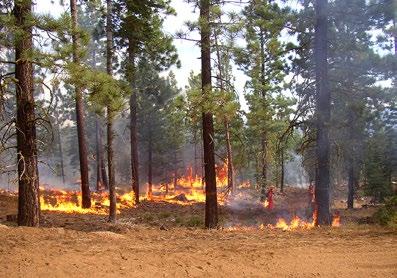
1 minute read
Protecting Rural Schoolchildren from Prescribed Fire Emissions
from 2021-2022 Annual Report | School of Civil and Environmental Engineering
by School of Civil and Environmental Engineering at Georgia Institute of Technology

A $1 million award from the U.S. Environmental Protection Agency (EPA) will help researchers in the Georgia Tech College of Engineering develop tactics to protect children from harmful emissions from controlled wildland burns. The initiative will provide equipment and new communications approaches in middle and high schools in Albany and Columbus, Ga., and Phenix City, Ala. Georgia Tech is focusing on the three cities because of their proximity to regular controlled burns, in addition to the communities’ lower socioeconomic statuses.
Advertisement
For one year, the researchers will deliver daily fire impact forecasts to each school, while also installing air purifiers and low-cost air quality monitors. Data from those monitors will be broadcast in real-time inside and outside classrooms. The Georgia Tech team will also create new curricula for teachers and students that increase understanding of air pollutants, their sources, and mitigation measures.
The Georgia Tech team consists of members in the School of Civil and Environmental Engineering (CEE), School of Chemical and Biomolecular Engineering (ChBE), and the Center for Serve-Learn-Sustain.
“Air pollution leads to more premature deaths than virtually all other environmental exposures. In the Southeast, prescribed burning is a major source of air pollution: it releases more particulate matter into the air than cars, trucks, factories, and power plants,” said Armistead (Ted) Russell, the Howard T. Tellepsen Chair and Regents’ Professor in CEE. “Children in areas that experience prescribed burning smoke are uniquely vulnerable. We are excited to work with schools to identify effective measures that can be used to help protect schoolchildren.”
Russell and his colleagues have decades of experience studying emissions. His previous studies found that prescribed burns led to highly elevated emissions in southern Georgia, especially during the peak burn period from January to April.
The award will allow Russell and CEE Principal Research Engineer Talat Odman to expand Georgia Tech’s Southern Integrated Prescribed Fire Information System (SIPFIS), which they helped create in 2015. The tool merges prescribed fire and air quality data into a common analysis framework, providing a unified prescribed fire database for the southern U.S.




